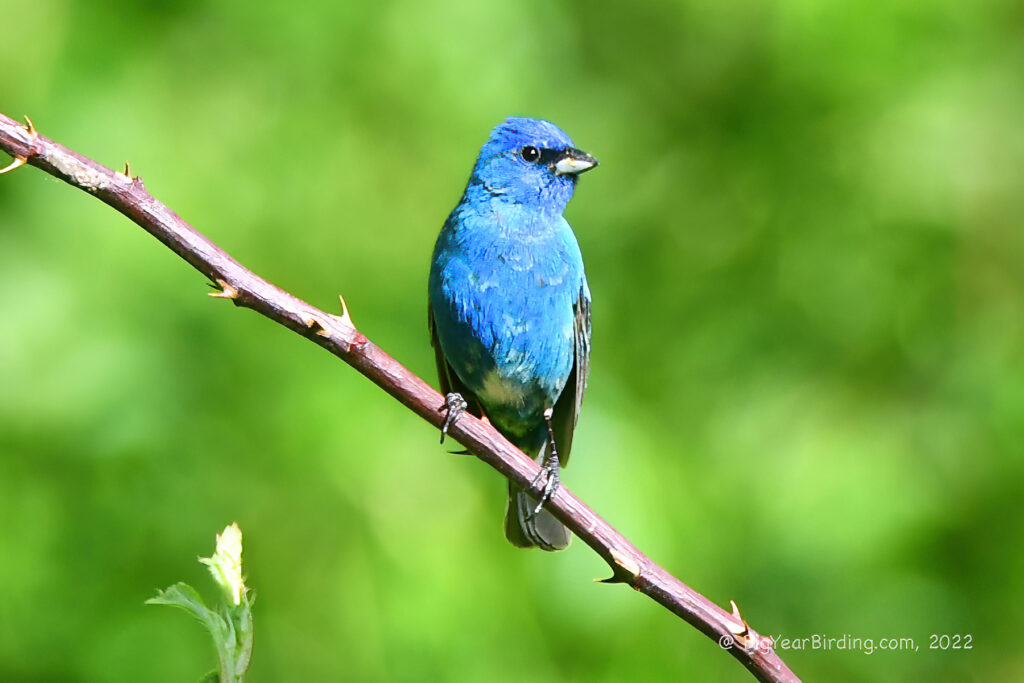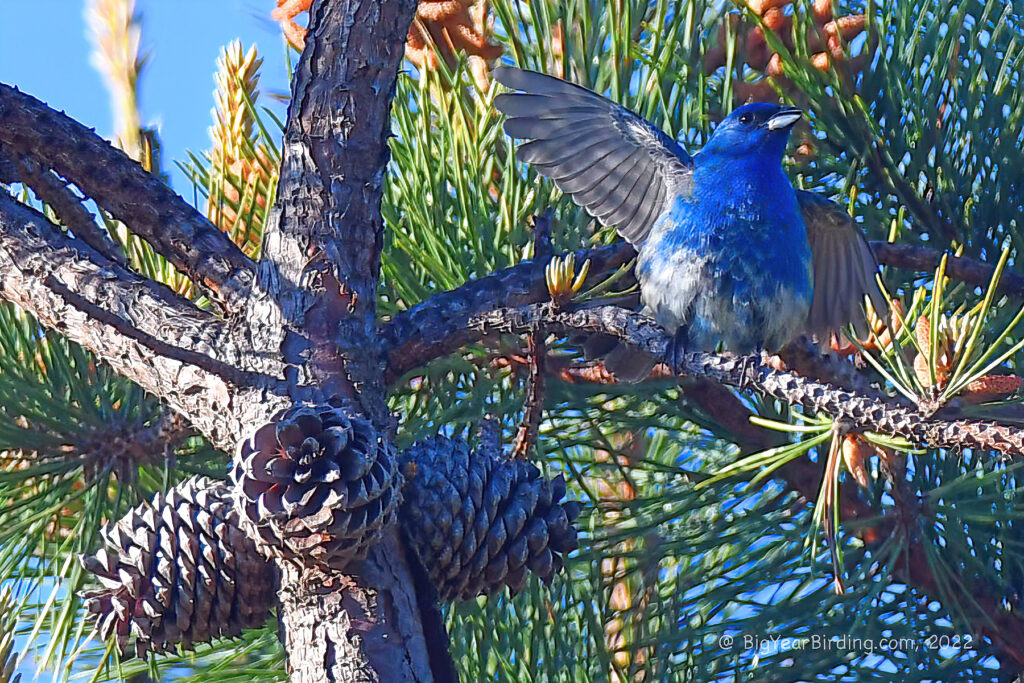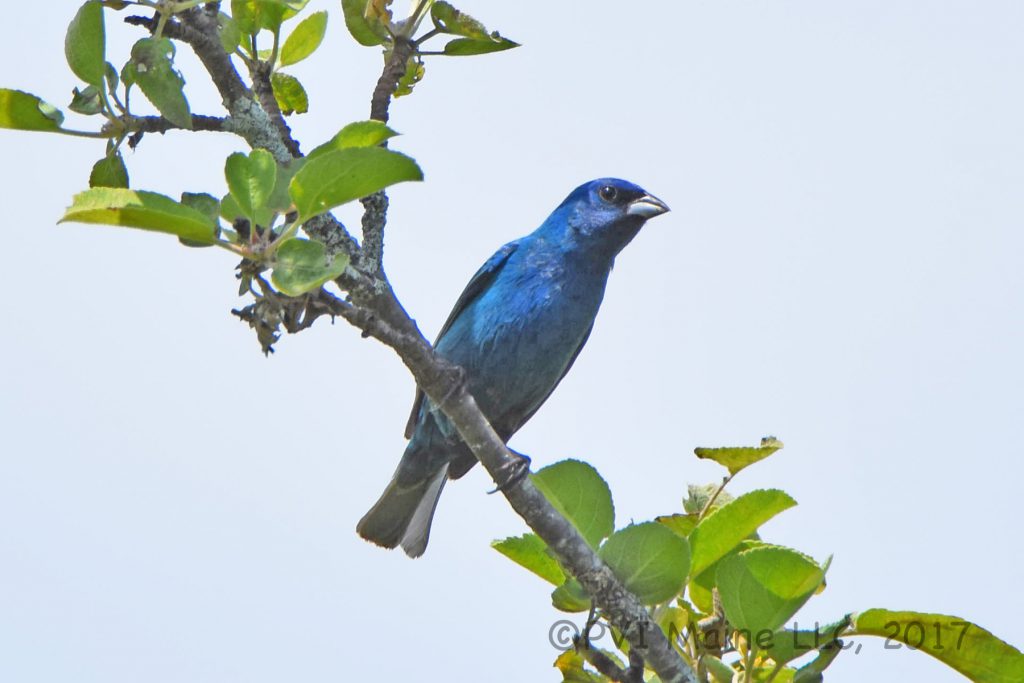
The Indigo Bunting (Passerina cyanea) is a small songbird that belongs to the Cardinal family. It is a common bird species in North America, known for its striking blue coloration. The adult male Indigo Bunting measures about 4.5 to 5 inches in length and weighs approximately 0.4 to 0.5 ounces. The female is slightly smaller, measuring about 4 inches in length and weighing approximately 0.3 to 0.4 ounces.

The male Indigo Bunting is easily identifiable by its vibrant blue plumage. The blue coloration is most vivid during the breeding season, and the feathers on the wings and tail have a slightly iridescent quality. The female is less colorful, with brownish-gray plumage that has a slightly blue tint. Both sexes have conical bills and dark legs.
Indigo Buntings are migratory birds, spending the breeding season in the eastern United States and southern Canada, and wintering in Central and South America. During the breeding season, male Indigo Buntings establish territories and court females with their beautiful songs. They build cup-shaped nests made of grasses, leaves, and bark, which are usually hidden in dense shrubs or trees.
In addition to their striking appearance, Indigo Buntings are known for their unique migration patterns. Recent research has shown that these birds use the Earth’s magnetic field to navigate during migration. They have specialized proteins in their eyes that allow them to see the Earth’s magnetic field, which they use to orient themselves on their long journey southward. This remarkable adaptation helps Indigo Buntings find their way to their wintering grounds, often traveling thousands of miles each year.

Overall, the Indigo Bunting is a fascinating and beautiful bird species that is a joy to observe in the wild. Their striking blue plumage and unique migration patterns make them a favorite among birdwatchers and nature enthusiasts alike.

